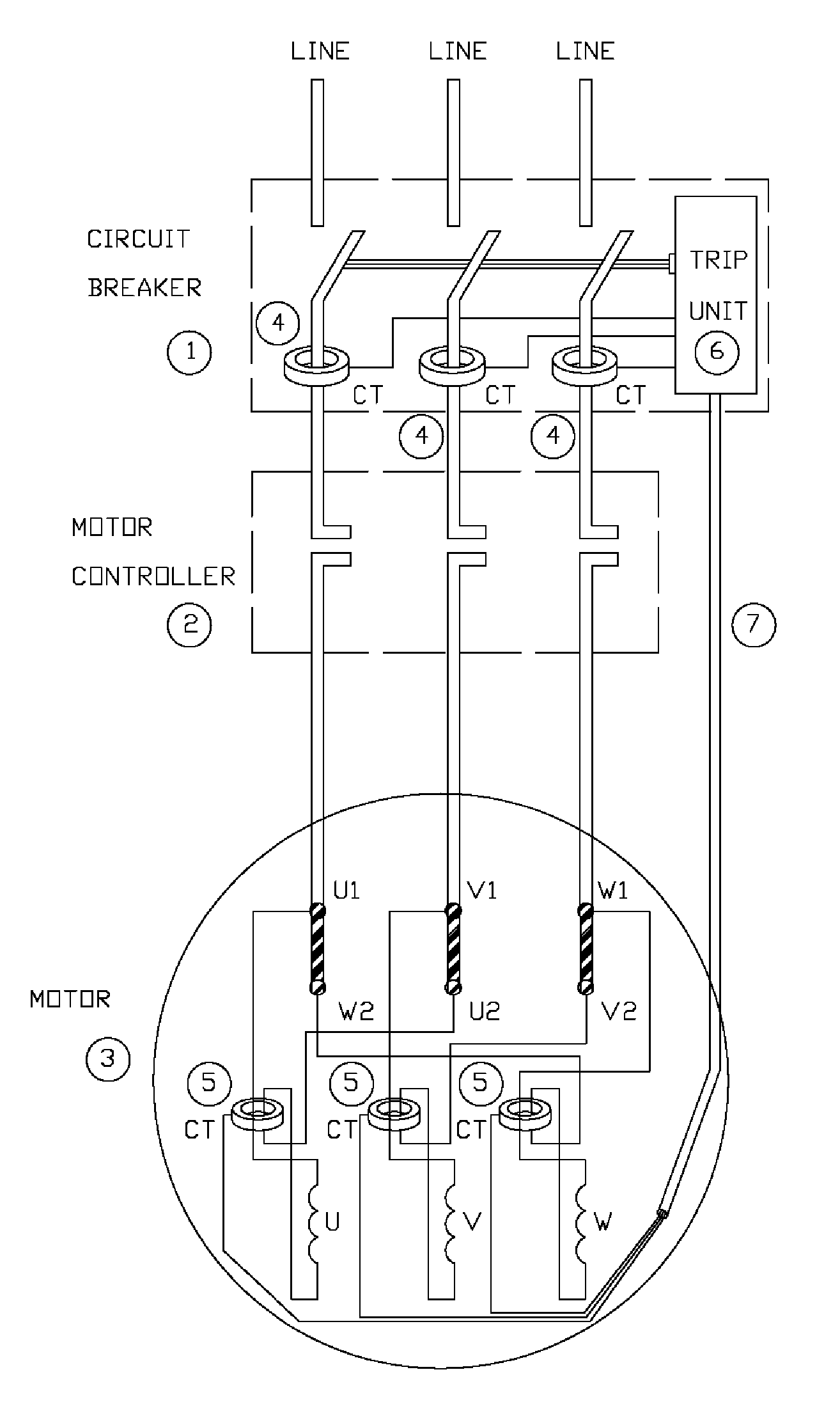Device and a method for advanced protection from short circuit current
- Summary
- Abstract
- Description
- Claims
- Application Information
AI Technical Summary
Benefits of technology
Problems solved by technology
Method used
Image
Examples
Embodiment Construction
[0017] Referring to the drawings; FIG. 1 and FIG. 2 show the typical view of the possible embodiment of the present invention with a motor load. A circuit breaker 1 is a supply circuit breaker for a motor 3. A motor controller contactor 2 is closed when motor 3 in operating. The important parts of circuit breaker 1 are current transformers 4 and a trip unit 6.
[0018] Trip unit 6 is connected to current transformers 4 which are part of circuit breaker 1 and measure the currents in the supply feeder (line) and to the current transformers 5 which form a part of the protection for motor 3 and measure currents in the motor phases. Current transformers can be replaced with any form of suitable current transducers. Trip unit 6 evaluates a rate-of-change of current in the supply feeder and produces a differential signal proportional to a difference between a current in the supply feeder and the current in the motor. To obtain a true differential signal, the connections of the current transf...
PUM
 Login to view more
Login to view more Abstract
Description
Claims
Application Information
 Login to view more
Login to view more - R&D Engineer
- R&D Manager
- IP Professional
- Industry Leading Data Capabilities
- Powerful AI technology
- Patent DNA Extraction
Browse by: Latest US Patents, China's latest patents, Technical Efficacy Thesaurus, Application Domain, Technology Topic.
© 2024 PatSnap. All rights reserved.Legal|Privacy policy|Modern Slavery Act Transparency Statement|Sitemap



